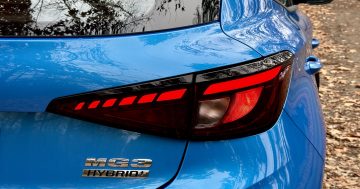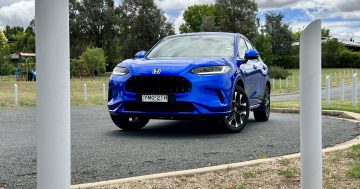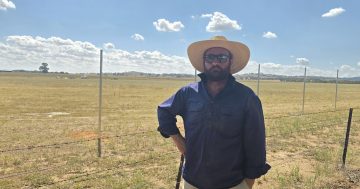
The NRMA installed a fast charger at the Playhouse Theatre carpark, located at 8 Cross St, Wagga Wagga, in September 2020. Photo: PlugShare.
Wagga City Council remains switched on to an electric future but is not in a rush to hand over premium city parking to the EV revolution.
On Monday a motion to provide designated electric vehicle parking spaces in Wagga’s CBD was rejected over concerns that it was premature and would favour the wealthy.
Instead, council resolved to receive a report on improving Wagga LGA’s readiness for increased usage of EVs in the future.
A range of local and state planning tools will be explored in the report, which is hoped will assist council in understanding the advantages, disadvantages and estimated costs of expanding infrastructure.
Cr Georgie Davies had moved to allocate a small number of parking spaces exclusively for EV owners in high traffic areas of Wagga including Fitzmaurice Street.
Cr Dan Hayes argued that “offering premium parking for someone who can afford that kind of car isn’t fair”.
Cr Rod Kendall quoted the most recently available data from the 2016 census, putting Wagga’s median annual income at $70,408 per household.
The cheapest fully electric vehicle on the market in Australia costs around two-thirds of that amount – the MG ZS EV, priced at $46,990 drive-away nationwide.
“The vast majority of our citizens are flat out affording a second-hand car,” he said, suggesting that putting EV-only parking in premium spots would “send the wrong message” to locals.
Council general manager Peter Thompson echoed these sentiments.
“Specifically identifying car parking spaces in good locations for electric vehicles would be an advantage for the people who can afford to buy an electric vehicle, but not available to people that can’t afford to buy one,” he said.
Cr Davies supported the amendment to her motion, saying that the report provided “an opportunity to be forward-thinking and progressive rather than reactive”.
Mayor Dallas Tout said the council has already invested in hybrid vehicles and feels that they offer a compromise.
“I think we need to get that acceptance in the community and education about hybrids and EVs … until pricing has become more affordable,” he said.
Thomas Bros Toyota sales manager Paul Fellows agreed that the Council needs to anticipate an increase in ownership but said there’s no rush.
“Uptake in the Riverina region pretty much exactly reflects the national trends, but it’s on a much smaller scale,” Mr Fellows said.
The Federal Chamber of Automotive Industries noted in its most recent VFACTS report that the rising cost of petrol is steering more people towards hybrid and electric vehicles.
Of the 101,233 cars sold in Australia in March of this year, 7474 were true hybrids, 5532 were fully electric and 427 were plug-in hybrids.
“Inevitably over the next few years battery technology will improve, so as more people buy electric vehicles the waiting times at charging stations will get longer and, by extension, pressure will mount on local and state governments to improve the infrastructure; but that is a future issue,” Mr Fellows said.
Mr Fellows said there was an understanding that EVs present a more sustainable and efficient long term option, but at the moment affordability, a limited charging network and ‘range anxiety’ – a fear of the car’s battery running out and leaving the driver stranded – presented barriers to adoption for rural and regional drivers.
Cr Tout insisted Cr Davies’ parking motion was not inappropriate but was proposed too early for the region.
“It’s probably not the right time for it right now, and that’s why the final resolution we have got now gives us the ability to have a look at that bigger picture and see what tools can be put in place to ensure we plan for the future,” he said.












